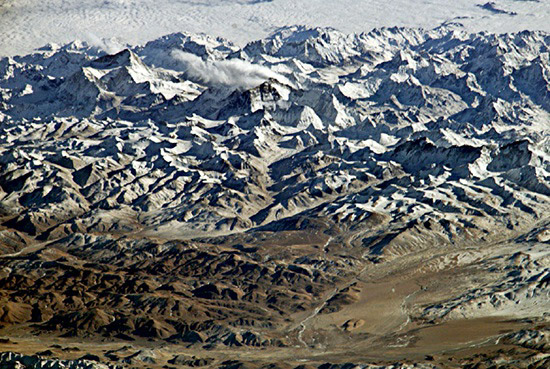The Himalayas stand as one of Earth’s most awe-inspiring geological formations, a result of the continuous and dynamic interactions of tectonic plates. Throughout Earth’s history, these plate collisions have been the driving force behind volcanism, mountain-building (orogeny), and continental growth. In cases of continent-to-continent collisions, as seen with the Himalayas, the process results in particularly dramatic mountain ranges.
Oceanic crust, composed of dense high-iron basaltic rocks, typically subducts under the lighter, high-silicon continental crust. This subduction leads to the formation of deep ocean trenches, volcanic peaks, and some continental uplift. However, the clash between continental plates is much more intense, as neither plate is compelled to subduct. This results in significant compression and uplift in the collision zone, forming some of the world’s tallest mountains.
The formation of the Himalayas began around 70 million years ago when the Indian plate, having separated from Pangea approximately 140 million years prior, started moving towards the Eurasian plate. The full-fledged collision between these continents, occurring around 10-20 million years ago, continues to this day. This ongoing process has given rise to the Himalayas, a young and towering range that includes over 50 peaks exceeding 23,600 feet (7,200 meters), with Mt. Everest reaching 29,000 feet (8,850 meters).
The Himalayas’ rise is primarily due to thrust-faulting, where converging crustal blocks are thrust upward and stacked atop each other. This intense geological activity has even lifted ancient seafloor deposits to the highest points on Earth. The Himalayas, thus, are not just a chain of mountains but a testament to the monumental forces of plate tectonics and their ability to shape our planet’s landscape.

